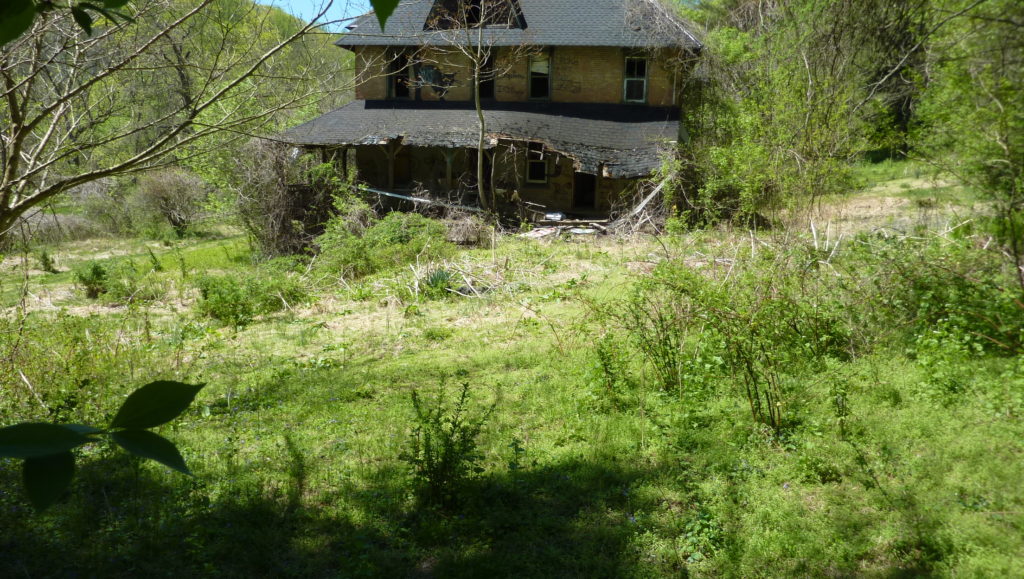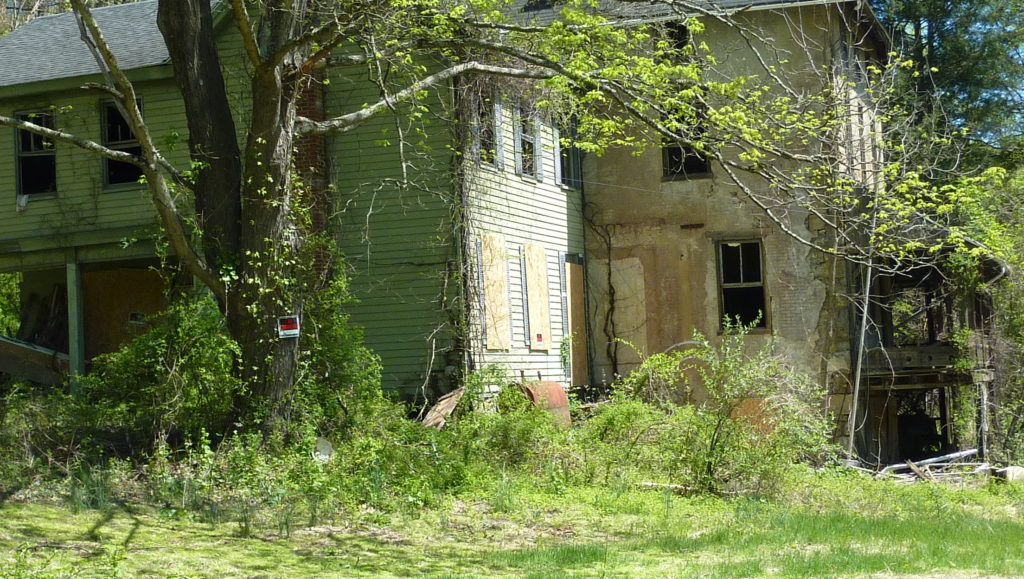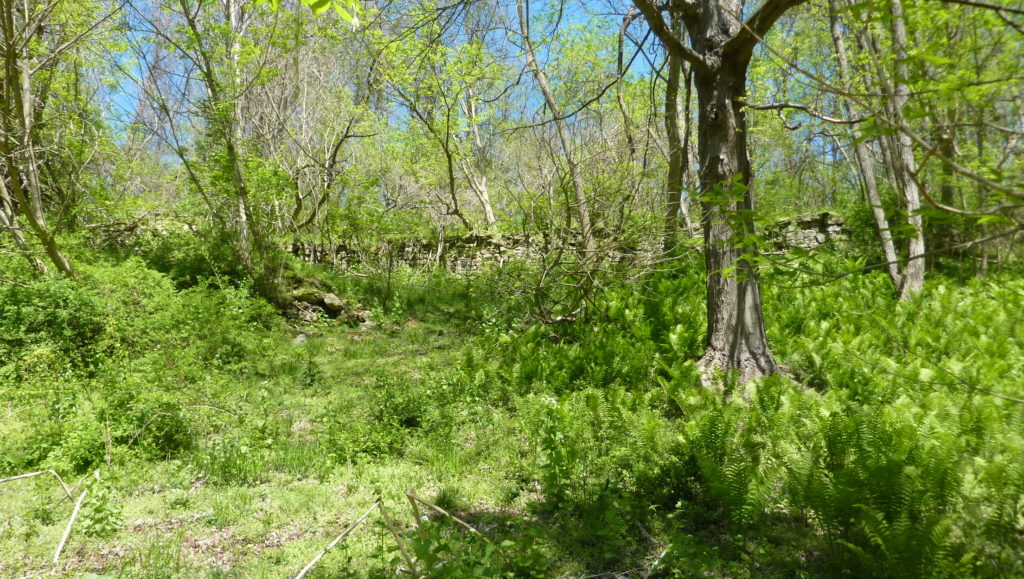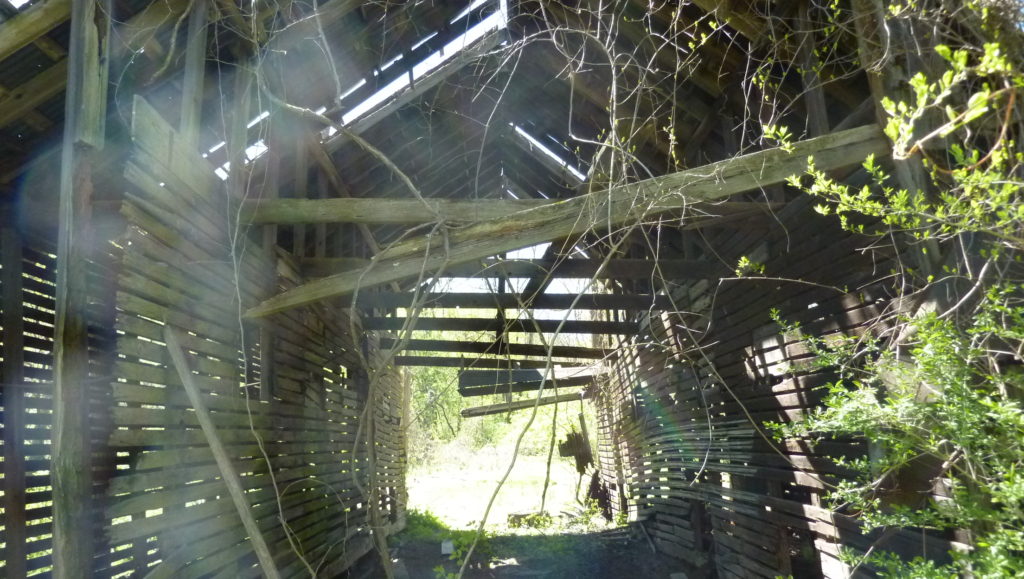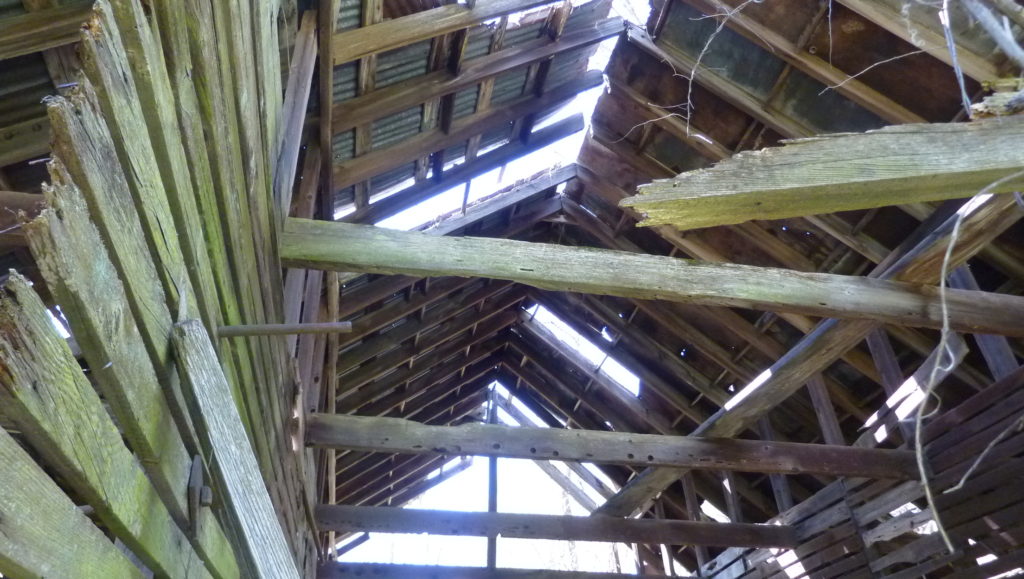DHS Field trip to Little Farm 4/24/2019
1491 EASTON RD – Parcel # 11-005-110 105
Participants:
Jim Little, John Little, D. Oleksa, L. Oleksa, S. Willey, St. Willey, S. Snyder, J. Walter
Objective:
Glean information about the site from the Little brothers, who grew up there, as the farm had been in their family from 1920 until 2005. The farm was the site of the second Durham Furnace and the farmhouse was the past home of famous local historian B.F. Fackenthal.
Permission for the tour was requested and given by the current owners, Quaint Oak Bank of Southampton PA. Many thanks to them.
Pictures of house and various stone foundations, buildings, etc were taken (see below). The house is, sadly, in very bad condition at this time and the whole farm is up for sale through Weichert Realtors. Hopefully someone will buy it and restore it to it’s past beauty. A photo collection of the house and property as it was in the 1880’s is available for viewing at the Riegelsville Library Historic room. Call for appointment 610-749-2353 (Beth Banko).
The actual blast furnace occupied the location of the current warehouses. An Iron “Salamander” sits at the spot where the last blast of the furnace was made. This is the name given to a large lump of Iron,slag and coal weighing many tons that is what was left in the bottom of a blast furnace when it is shut down ” blown out” for the last time. It is usually too heavy to move and too hard to cut up , so it is just left in place.
John (Jack) Little indicated that 1st forge location (see the 1700’s map of the area) was just north of the block building’s east wall at about 40 34 52.98 N – 75 12 06.02 W. It was pretty well covered with leaves and debris and should be investigated in the future. This would have been where the pig Iron from the first furnace that was located in Durham proper was processed into manufactured items. (We would like to find documents about and/or actual items from the 1700’s that were made there.)
We observed the foundations of the “ice house” ( as shown on the old maps). It is located right in back of the farmhouse. Also the large retaining wall up on the hillside in back of the farm house that was for the Iron Company’s ore cars that were pulled around by small locomotives. The materials for the use in the furnace/ furnaces was originally all hauled up the hillside so that it could be wheelbarrowed into the tops of the furnaces over a wooden bridge. Coal was hauled up the opposite side of the hill from a coal storage area by the canal. The remains of the walls are still quite visible.
The farmhouse has a central 3 story section built of stone with walls about 18″ thick. Another brick section is on the East side and a wooden section on the West side.
The Little brothers said that the house was shared by their Irish immigrant Grandfather (Stewart Little) and his children and grandchildren. They farmed the property with crops and dairy items until the 1960’s. They indicated that some of the infrastructure for a water source was still in place and may still be functional if the valves in the adjoining yard were uncovered.
The foundations for the original blacksmith shop and animal barns are still quite apparent and a corncrib built with cut nails is still near these foundations. The brothers said they used the corncrib until they stopped their farming endeavors. They said their father and uncle had the dairy barn torn down as the roof had gone bad and the chestnut wood structure was better recycled into useful lumber before it fell to rot.
More research is needed as to the origins of the farmhouse as the stone central section may have had something to do with the very first industrial operation on the site. It is located directly across and in clear line of sight of the house that was built for the owners/managers of the first industrial operation on the site.
A LIDAR scan could reveal more in-depth information about the site.
Many thanks to our “tour guides” i.e. the Littles, for their kindness.
Jim Walter

